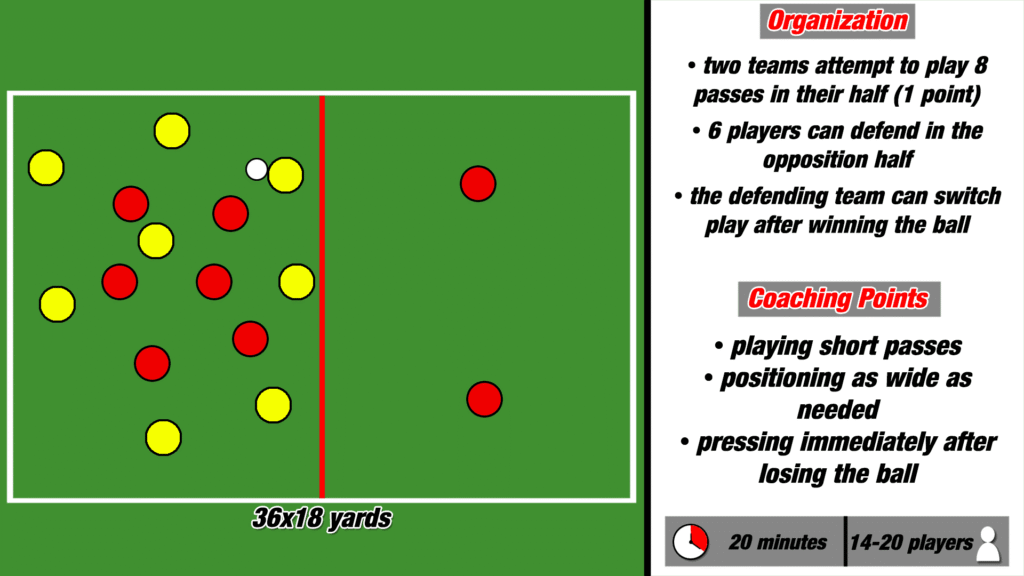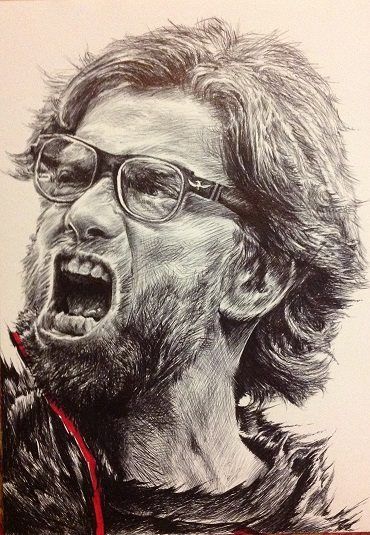In modern football, Gegenpressing has emerged as one of the most influential tactical innovations. It has transformed how top teams defend, attack, and dominate matches without necessarily controlling possession. But what is Gegenpressing? This article explores the origins, principles, strengths, and limitations of this high-pressing approach, alongside its impact on some of the world’s most successful managers and clubs.
Introduction
The beautiful game has always evolved through tactical ingenuity, and Gegenpressing represents one of the boldest shifts in football’s strategic landscape. From Germany to England and beyond, this method of immediate pressing after losing possession has captured the attention of coaches, analysts, and fans alike.

The Definition of Gegenpressing
What Does Gegenpressing Mean?
The term Gegenpressing is German for \”counter-pressing.\” It refers to a tactic where a team, upon losing possession, works collectively to win the ball back instantly—typically high up the pitch. This minimizes the opponent’s ability to counterattack and maximizes opportunities to regain momentum in dangerous areas.
Core Principles of Gegenpressing
- Immediate reaction: Press begins the second possession is lost.
- Compact structure: Players stay close to reduce passing lanes.
- Aggressive intent: Pressure with purpose, not just movement.
Historical Origins
The Dynamo Kyiv Revelation
In 1984, Ralf Rangnick played a friendly against Dynamo Kyiv and was stunned by their pressing intensity. This experience became the catalyst for his interest in structured high pressing, laying the groundwork for what he later developed into Gegenpressing.
Influential Figures
While Rangnick formalized the concept, his ideas were shaped by legendary tacticians like Valeriy Lobanovskyi, Ernst Happel, Arrigo Sacchi, and Zdeněk Zeman. These figures championed disciplined pressing, space control, and proactive football strategies that influenced Rangnick’s vision.
Philosophical Foundations of Gegenpressing
Changing the Mentality of Defense
Traditional defensive systems often encourage falling back and regrouping. Gegenpressing flips this mindset—viewing possession loss as an opportunity rather than a setback. It demands initiative and courage to press forward rather than retreat.
Team Above All
Gegenpressing only works if the entire team buys into the concept. It relies heavily on team cohesion, synchronized movements, and understanding pressing triggers. It’s not just about running hard—it’s about running smart, together.
Key Tactical Principles
When to Press: Recognizing Triggers
Successful Gegenpressing teams identify pressing triggers such as:
- A heavy touch by the opponent
- A sideways or backward pass
- An isolated player receiving the ball under pressure
Types of Pressing Within Gegenpressing
There are two primary approaches:
- Zonal Pressing: Players defend spaces and coordinate their movements to isolate the ball carrier.
- Man-Oriented Pressing: Defenders engage opponents directly while the team maintains spatial balance.
Maintaining Compactness and Vertical Control
One of the cornerstones of Gegenpressing is vertical compactness—ensuring minimal space between midfield and attacking lines. This shortens reaction time and allows for quicker ball recovery.

The Physical Demands
Fitness as a Prerequisite
Gegenpressing is one of the most physically demanding tactical systems in football. It requires players to maintain high-intensity sprints, swift recoveries, and relentless movement throughout the entire match. Without elite fitness levels, the system simply cannot function as intended.
Endurance and Recovery
Players are expected to cover large distances and execute repeat sprinting actions, often with minimal rest. Recovery sessions, conditioning drills, and sports science become critical tools for maintaining the physical edge required for sustained pressing.
Case Study: Leeds United Under Bielsa
Marcelo Bielsa’s Leeds United team showcased a similar pressing style, which led to remarkable performances but also eventual player burnout—a phenomenon often dubbed “Bielsa Burnout.” This highlights the tightrope teams walk when relying on physically exhaustive tactics.
Psychological Demands
Mental Alertness and Reaction Speed
Beyond fitness, Gegenpressing demands extreme mental sharpness. Players must quickly assess situations, react to visual cues, and communicate effectively. A second’s hesitation can break the press and allow the opponent to escape.
Trust and Communication
The system’s success hinges on mutual trust. If one player presses without support, the whole team becomes exposed. Players must communicate constantly and trust teammates to react in perfect unison, making cohesion essential.
Emotional Intensity
Gegenpressing instills a warrior mentality. It thrives on urgency and hunger to win the ball. Players must buy into a shared identity—one defined by sacrifice, selflessness, and high emotional investment.
Benefits of Gegenpressing
Winning Possession in Advanced Areas
One of the biggest advantages of Gegenpressing is its ability to recover the ball close to the opponent’s goal. This creates instant scoring opportunities without the need for long build-ups.
Disrupting Opponent Play
Teams struggle to execute clean transitions when constantly under pressure. Gegenpressing disrupts their rhythm and forces hurried, often inaccurate passes that can lead to turnovers.
Creating Chaos, Strategically
By forcing the opponent into uncomfortable situations, Gegenpressing generates chaos—but it’s a calculated chaos. With training, this disorganization is controlled and exploited to initiate swift attacks.
Weaknesses and Limitations
Player Burnout and Physical Limitations
As seen in many high-pressing teams, the intensity of Gegenpressing can lead to fatigue, injuries, and performance drop-off over a season. This is particularly risky with a shallow squad or older players.
Vulnerability to Long Balls
Teams using Gegenpressing often push their defensive lines high. This creates space in behind, which opponents can exploit with quick, direct passes over the top—especially against slower defenders.
Difficulty in Integrating New Players
New signings may struggle to adapt to the system’s complexity and tempo. It takes time to understand pressing triggers, spacing requirements, and the split-second decision-making involved in successful execution.
Famous Advocates
Ralf Rangnick – The Architect
Often referred to as the godfather of Gegenpressing, Ralf Rangnick developed and championed this philosophy through his work at clubs like Stuttgart, Schalke, Hoffenheim, and RB Leipzig. His ideas have influenced a new generation of tactical thinkers.
Jürgen Klopp – The Master Practitioner
Klopp famously implemented Gegenpressing at Borussia Dortmund, where he disrupted Bayern Munich’s dominance. At Liverpool, his use of the system led to Premier League and Champions League triumphs, making it a cornerstone of his success.

Thomas Tuchel – The Adaptable Strategist
Tuchel, who followed Klopp at Mainz and Borussia Dortmund, added his own variations to Gegenpressing, incorporating more positional play and control while maintaining high pressing standards at Chelsea and PSG.
Julian Nagelsmann and Ralph Hasenhüttl – Modern Disciples
Nagelsmann’s time at RB Leipzig and Bayern Munich, along with Hasenhüttl’s work at Southampton and Leipzig, showcased modern adaptations of Gegenpressing. Both managers emphasize speed, fluidity, and strategic pressing as core principles.
Conclusion
Gegenpressing is more than a tactical buzzword—it’s a philosophy that has redefined modern football. By focusing on immediate ball recovery, collective movement, and high-intensity pressing, teams can control games even without sustained possession. It requires exceptional fitness, mental sharpness, and unwavering commitment from players, but when executed properly, its rewards are immense.
From Ralf Rangnick’s early blueprints to Jürgen Klopp’s trophy-laden campaigns, Gegenpressing has left an indelible mark on the game. As football continues to evolve with data, technology, and tactical hybridity, the essence of Gegenpressing will likely remain a core tool in the arsenal of top-tier managers.


0 responses to “What Is Gegenpressing? A Deep Dive Into Football’s Most Intense Tactical Philosophy”